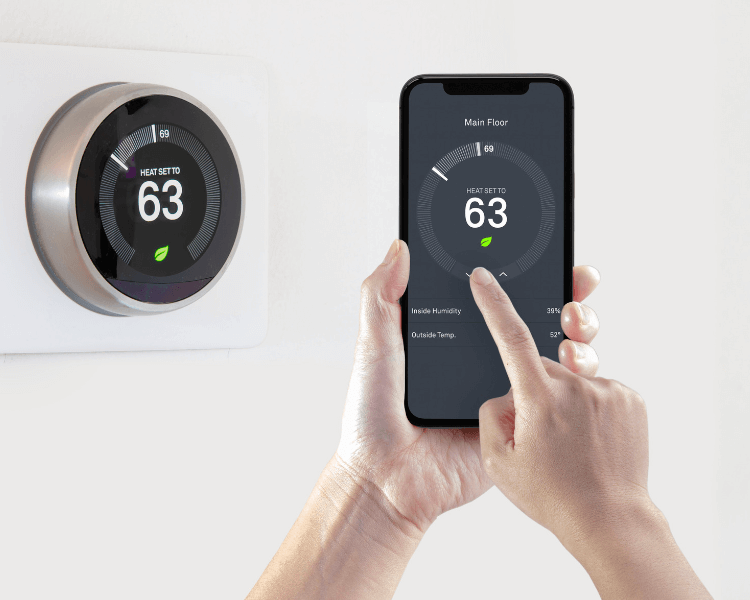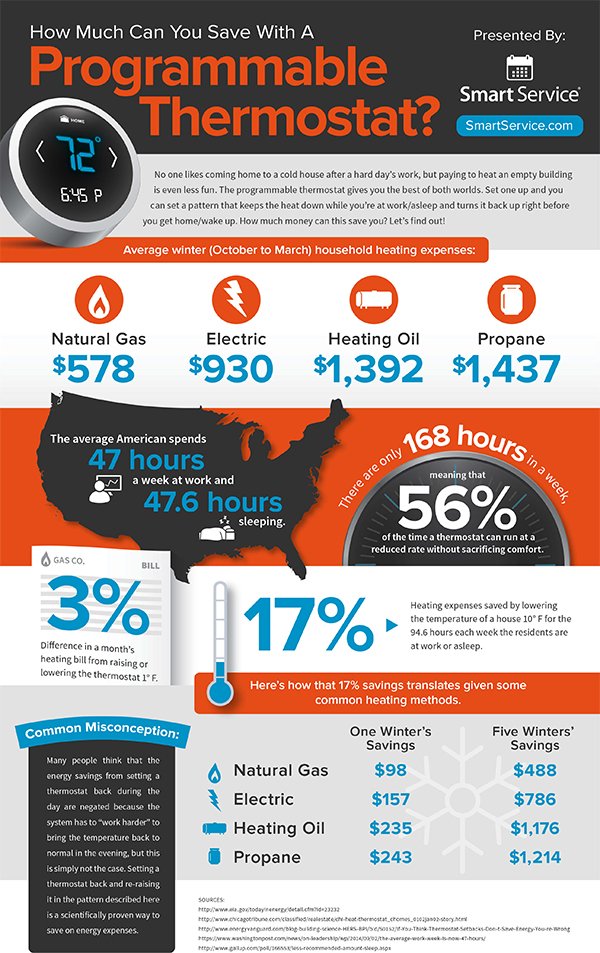Is a Smart Thermostat Worth it?
By My Service Depot on Monday, November 7, 2022Learn about all of the benefits that a Smart Thermostat has to offer and discover some of the most innovative and popular models on the market today!
If you’re like most homeowners, you’re always on the lookout for ways to save money on your energy bill. One way to do that is to upgrade to a smart thermostat. Smart thermostats can save you up to 30% on your energy bill, so they’re worth considering. But with so many different models available, it can be tough to know which one is right for you.
That’s why we’ve put together a list of the five best smart thermostats of 2022. We’ve based our list on factors like affordability, features, and ease of use. So whether you’re looking for a budget-friendly option or a top-of-the-line model, we have something for you. Keep reading for our picks!
What is a Smart Thermostat?
A thermostat is a device that regulates heating and cooling in your home, ensuring that your space remains at a comfortable temperature. Smart thermostats are among some of the latest innovations in temperature regulation, offering additional features and capabilities that traditional thermostats lack. For example, many smart thermostats can be controlled remotely via a mobile app, making it easy to adjust the temperature even when you’re not at home.
What Are The Benefits of Owning a Smart Thermostat?
Smart thermostats are one of the most popular home gadget trends on the market, and it’s not hard to see why. They offer many benefits over traditional thermostats, including the ability to reduce HVAC maintenance costs and increase comfort and indoor air quality. Below is a list of some of the ways a smart thermostat could benefit you!
Smart Thermostats Let You Track Energy Use
Paired with a mobile app the smart thermostat provides helpful reports on your overall energy usage. It can show how your usage has changed overtime and offer suggestions on how to improve it, which can help save additional money.
Smart Thermostats Allow You Control of Your Thermostat Remotely
Having a smart thermostat in your home will allow you to control your homes temperature from a distance. Forget to turn it off before heading into work? Or is it the dead of winter and you forgot to turn the heat up for your pet left at home? No problem, just open the app on your phone and with a tap of a button you can have full control over your HVAC system.
For me personally, I have found this feature extremely useful at night when my head first hits my pillow as I often forget to adjust my thermostat accordingly. Now, instead of making my way back downstairs, from the comfort of my bed, I just take out my phone and adjust the thermostat to best suit my optimal sleeping temperature.
Another great use for being able to control your thermostat remotely may be for a rental property or vacation home. If the property is vacant half of the year, you can set limits so that you are notified when the temperature reaches a certain level and adjust it accordingly. If you want to keep the HVAC system off until the tenants arrives to the property, the remote features will allow you to do so.
Smart Thermostats Are Easy to Install
As long as you have standard electrical wiring to the thermostat in your home, then installing a smart thermostat is a very simple process. Begin by removing the covering of your old thermostat. If you see a wires marked with a ‘C’, ‘R’ , ‘W’, ‘Rc’, or ‘Rh’, then you should be able to successfully install a smart thermostat according to the manufacturer’s installation instructions. Understanding what these wires mean will help you with this process.
In short, the ‘C’ wire’s primary purpose is to give power to the thermostat itself, but in some cases the there will be no ‘C’ wire as the thermostat will receive its power from another existing wire.
If there is a ‘G’ wire, consider this the safest as it is not a live wire and is used to power the blower of the system, so without this wire there won’t be any air blowing out of your unit.
The ‘L’ wire is more of a port than an actual wire and is used for the indicator lights on a thermostat. The ‘X’ (auxiliary heat) and ‘E’ wires are similar and (if present) are there to give additional heating whenever the system cannot keep up with the cold surroundings outside.
The ‘RH’ (red heating) and ‘RC’ (red cooling) are both live wires and are the connection you need in order to power the heating and cooling system of the air conditioning unit. To learn more about what these wires mean visit thewiredshopper. For more on the installation process, keep reading!
Smart Thermostats Save Money
With the ability to create an energy profile of your home based on its size, location, and amount of occupants, it can be programmed with automation to allow for maximized energy efficiency. Also, with allowing you to schedule your HVAC system to be optimized while you are home and to run less while you are out for the day, the savings will begin to mount.
No matter where you find your statistics, they all boast dramatically improved levels of savings. Reports by Google Nest claim that you will save 15% on cooling costs and 10-12% on heating costs with its smart thermostat. The Ecobee smart thermostat, now manufactured by Generac, claims that customers can save 26% on combined heating and cooling costs.
Equipped With Movement Sensors Making it Easy to Schedule HVAC Usage
These thermostats are equipped with sensors that can detect when people in the house are active. These sensors are combined with built-in long term learning functions that enable these thermostats to understand when people are home or away, allowing for them to build schedules and determine the optimal time for the HVAC system to be running.
Better Temperature Controls and Visibility
These smart thermostats look modern and offer stylized interfaces that are not only appealing but much easier to read than traditional thermostats. These brightly lit screens will eliminate the need to put your glasses on just to read the temperature in your home.
Compatibility With Other Smart Devices and Voice Commands
Everyday the platform of smart devices grows and so does the compatibility of these devices. The smart home market size stands at over $84.5 billion dollars and is expected to grow to over $138.9 billion dollars by 2026. This means that your smart thermostat can link up with many other home devices (and the list continues to grow). Smart humidifiers and air purifiers, for example, can be controlled as an extension of your smart thermostat as long as they are on compatible platforms. To top it off, many can be controlled with the use of voice command, like Amazon’s Alexa.
For these reasons, smart thermostats are becoming increasingly popular in both residential and commercial buildings. So if you’re looking for a way to save money and stay comfortable, a smart thermostat is a great option.
How Do You Know if a Smart Thermostat is Right For Your Needs?
When it comes to energy efficiency, there’s no one-size-fits-all solution. The best way to save money on your energy bill is to find the right combination of energy-saving strategies for your home and lifestyle. A smart thermostat is a great option for many homeowners, but it’s not the right choice for everyone. Here are a few things to consider when deciding if a smart thermostat is right for you.
- Do you live in a multi-level home? If so, you’ll need a thermostat that can accommodate different temperature settings for each level. A smart thermostat can do this, whereas a traditional thermostat can only control the temperature for the entire house.
- Do you have a busy schedule? If you’re often out of the house during the day, or if your schedule varies from week to week, a smart thermostat can be a great way to save energy. You can program it to adjust the temperature based on your schedule, so you’re not wasting energy when you’re not home.
- Another important consideration is compatibility. Not all smart thermostats will work with every type of heating and cooling system. So before you make your purchase, be sure to check that the model you’re interested in is compatible with your HVAC system.
- Finally, think about any special features that might be important to you. Some smart thermostats have sensors that can detect when someone is home and make adjustments accordingly. Others come with built-in alarm systems that will notify you if the temperature in your home gets too high or too low. Decide which features are most important to you and choose a model that has them.
Answering these questions will help you decide if a smart thermostat is right for your needs. If you’re not sure which type of thermostat is best for your home, contact a local HVAC company for more information. They can help you find the perfect solution for your energy-saving needs.
Top Five Best Smart Thermostats on The Market Today
1. Ecobee3 Lite Smart Thermostat
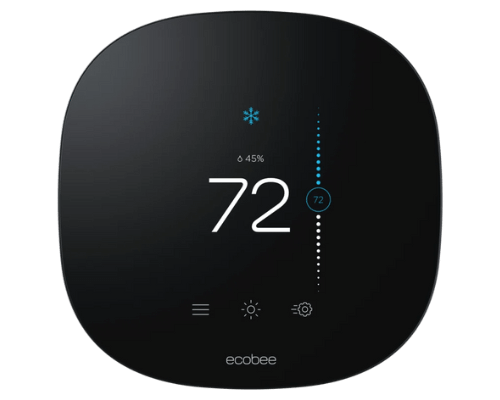
The Ecobee3 Lite has a responsive touchscreen and integrations with Amazon Alexa, Apple HomeKit, Samsung SmartThings, Wink, and IFTTT which gives the lower-priced $169 Ecobee3 Lite Smart Thermostat serious appeal. No other Wi-Fi thermostat available today offers this many smart home partnerships for this low of a price. Although, “Smart” is a bit of a stretch for the Ecobee3 Lite, since it doesn’t rely on activity-tracking sensors or any other sort of adaptive tech to learn your routine.
2. Emerson Sensi Touch Wi-Fi Smart Thermostat
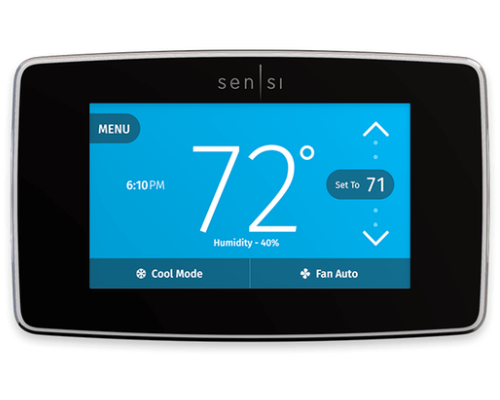
The Sensi Touch has a practical design — a large responsive touchscreen and the ability to adjust the temperature, create schedules, and more straight from the thermostat. The Sensi Touch is a solid smart thermostat, but if you’re looking for similar features and a sleeker look, consider the Ecobee3 Lite or the Nest E.
3. Google Nest Learning Thermostat
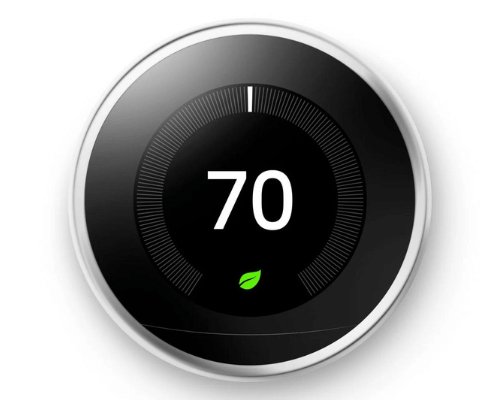
The $249 Nest Learning Thermostat has a larger display, a better resolution, and a far-field sensor for viewing time and temperature information from a distance. It works with Google Assistant and Alexa, and Nest sells a temperature sensor as an optional accessory. Nest is a solid smart thermostat, but the Ecobee4 offers more smart home integrations and a better overall value.
4. GE CYNC Smart Thermostat
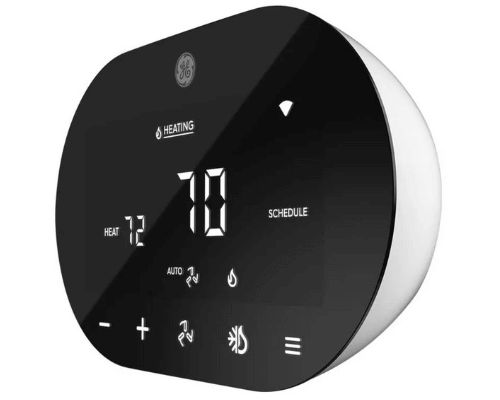
The Cync Smart Thermostat can be a worthwhile investment to help more accurately heat and cool your home. The additional temperature sensor compatibility is a part of what sets Cync’s thermostat apart from competitors such as the Nest Thermostat. Although, the Cync Smart Thermostat is very light on features compared to the Google Nest Thermostat.
5. Honeywell Home Wi-Fi Thermostat
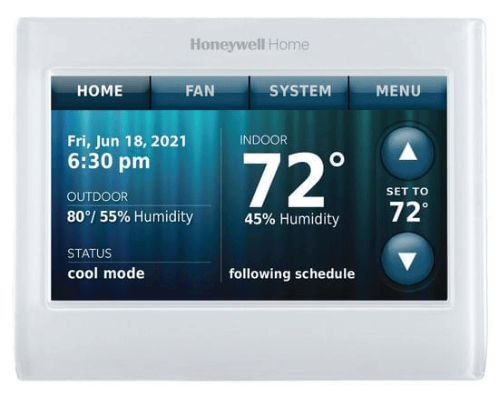
Along with straightforward management software, the Honeywell Wi-Fi Smart Thermostat quickly learns your energy usage habits and adapts them accordingly. Honeywell’s Wi-Fi Smart Thermostat can compete directly with the Nest Learning Thermostat on features, but it doesn’t match the Nest’s intuitive design.
How to Install a Smart Thermostat in Your Home
Installing a smart thermostat is pretty straight forward and all models will come with instructions that should help in this process. In general, the process will go as follows:
- Locate your circuit breaker and turn off the power to your home as you may need to deal with live wires. A good tool to have when dealing with electrical wires is the Klein Tools Non Contact Voltage Tester Pen.
- Find a location for the thermostat that is near an outlet and away from windows or doors. Chances are that you can just use the location of your old thermostat.
- Remove the old thermostat from the wall (if there is one).
- Connect the wires to the terminals on the new thermostat, following the diagram included in the instructions.
- Once the wires are connected, put the cover back on the thermostat and screw it into place. At this point it is ok to switch the breaker back on to test if the thermostat is being powered properly.
- Finally, download the app for your specific model of the thermostat and follow the prompts to finish the setup process.
That’s it! With a few simple steps, you can upgrade your home’s heating and cooling system to a smart thermostat. Not only will you save money, but you’ll also have peace of mind knowing that your home is comfortable and safe while you’re away.
Smart Thermostat Tips for Saving Energy and Money
As we move into the colder months, it’s important to be mindful of our energy usage. Heating costs can quickly add up, but there are a few simple things we can do to help offset the expense. One easy way to save energy and money is to install a smart thermostat. This Smart Service Infographic showcases the many beneficial statistics that a smart thermostat can provide your home.
Here are a few tips for getting the most out of your smart thermostat:
Set a schedule:
Program your thermostat to lower the temperature at night or when you’re away from home during the day. This will help you save energy without sacrificing comfort.
Use the “AWAY” feature:
Most smart thermostats have an “away” feature that will automatically lower the temperature when no one is home. This is a great way to save energy when you’re not using your home.
Adjust for the weather:
Many smart thermostats can automatically adjust the temperature based on the weather outside. This ensures that you’re not wasting energy heating or cooling your home when it’s not necessary.
By following these simple tips, you can maximize your energy savings and keep your home comfortable all winter long!
Potential Drawbacks of Using a Smart Thermostat, and How To Avoid Them
The idea of a smart thermostat is very appealing—after all, who wouldn’t want to save money on their energy bill? And while there are plenty of potential benefits to using a smart thermostat, there are also some potential drawbacks that you should be aware of before making the switch. Here are four potential drawbacks of using a smart thermostat, and how to avoid them:
1. Typically it is a fairly simple and straight forward process, but for some, it can be difficult to install. If you’re not comfortable with technology, or if you’re not handy around the house, then it’s best to hire a professional to help you out. Luckily, most major retailers offer installation services for an additional fee.
2. Another potential drawback of using a smart thermostat is that it requires an internet connection. This means that if your internet goes out, so does your thermostat—which can be frustrating if you’re in the middle of a heat wave! To avoid this problem, make sure that you have a backup internet connection (like a hotspot) in case your primary connection goes down.
3. A third potential drawback of using a smart thermostat is that it can be hacked. While this is unlikely, it’s important to be aware of the possibility. To avoid being hacked, make sure to choose a reputable brand and never share your wifi password with anyone.
4. The last potential drawback potential drawback of using a smart thermostat that we felt worth mentioning is that (for some) it can be hard to troubleshoot if something goes wrong. If you run into any problems, your best bet is to contact the customer support team for your specific brand or model.
Despite these potential drawbacks, there are still plenty of reasons to consider using a smart thermostat in your home—just make sure that you’re aware of the risks involved before making the switch!
Life Span of a Smart Thermostat
Smart thermostats are a great way to save energy and money, but like any piece of technology, they have a limited lifespan. Most smart thermostats will last for around 10 years with proper care and upkeep. However, there are a few things that can shorten a smart thermostat’s lifespan, such as extreme temperatures or frequent power outages.
If you find that your smart thermostat is no longer working as well as it used to, it’s probably time to replace it. Fortunately, replacing a smart thermostat is a relatively easy task that anyone can do. Most smart thermostats can be easily replaced by following a few simple steps.
Conclusion
Smart thermostats are becoming more popular than ever before and are a great way to become more energy efficient and save money on your monthly utility bill. If you are looking for a way to upgrade your home, a smart thermostat is a perfect option.

